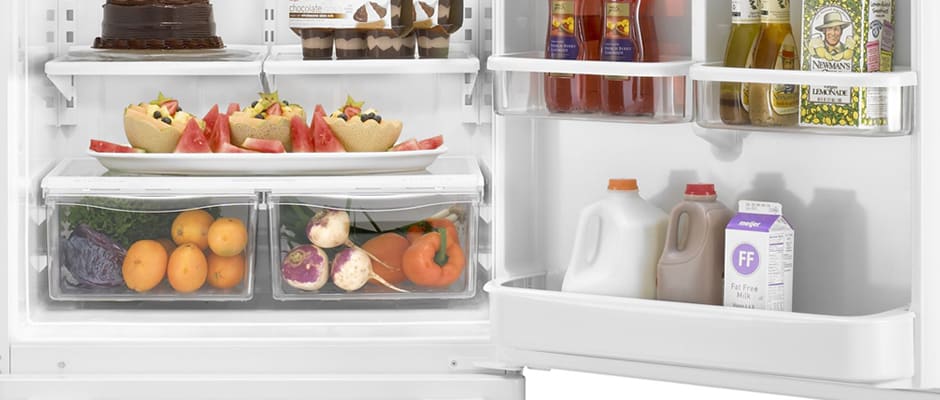Introduction
Front
{{section_header}}{{section.name}}{{/section_header}}
The {{product.name}} has a refrigerator on top and a pull-out freezer drawer underneath. It boasts a pristine, glossy white finish with no frills. The two covered screw holes on the side allow the door to be hinged in the opposite direction.
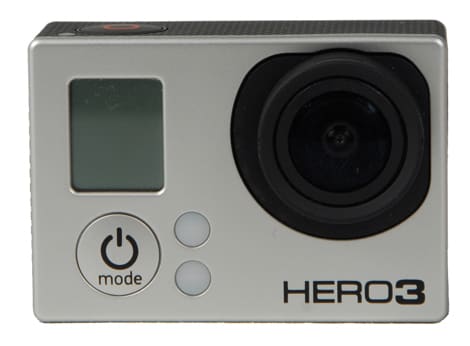
The shiny white finish almost never picks up fingerprints. It's so white, in fact, that in order to see it up close, we needed to include the product logo and a hand for points of reference.

The sections have temperature controls independent of each other, on a 0-7 scale located on a unit at the top center of the refrigerator. The console numbers glow, though the rest of the unit does not. The manufacturer's recommended settings are labeled, as well.


Interior
{{section_header}}{{section.name}}{{/section_header}}
The interior of the {{product.name}} matches the exterior in its simplicity.
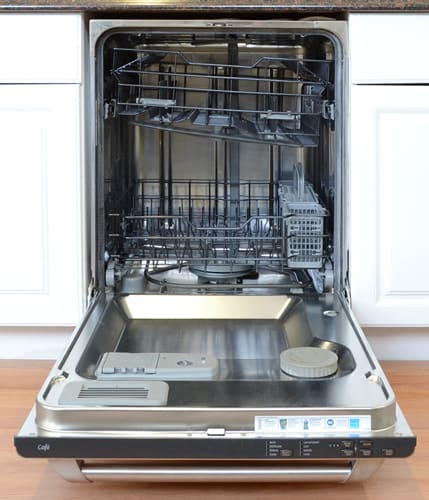
The interior of the CDWT980VSS.
The interior of the fridge contains four adjustable half shelves, as well as a full-width fixed shelf on the bottom resting above two identical crisper drawers, each with its own humidity control. The half shelves adjust using hooks on the back, which are cumbersome to manipulate but offer extensive options for customization.
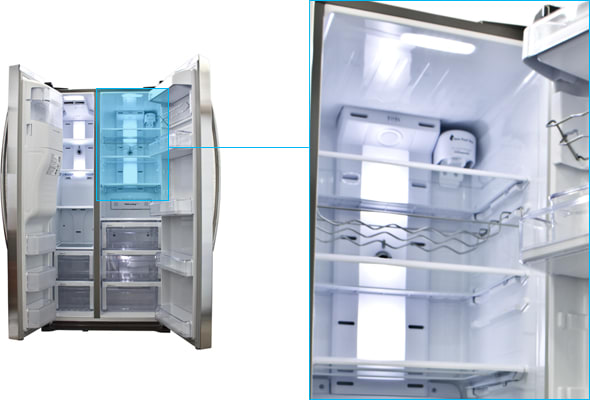
The door has a full-width fixed shelf on the bottom deep enough to hold gallon-sized containers, along with three adjustable half shelves which can accommodate liter-sized bottles. There is also an adjustable dairy tray on the top left corner.
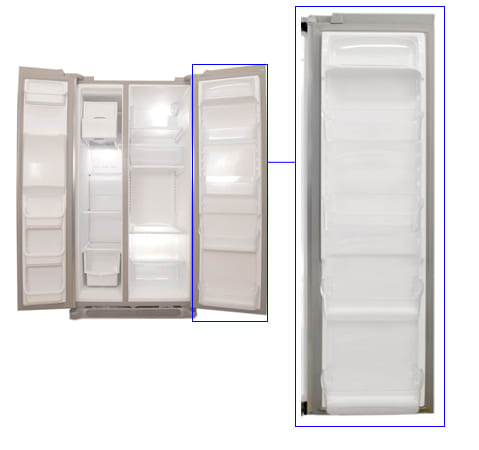
The freezer has two wire shelves that divide it into an upper and lower level. The lower shelf is bisected by a plastic divider, while the upper shelf is broken up into three sections by plastic dividers and an ice tray.
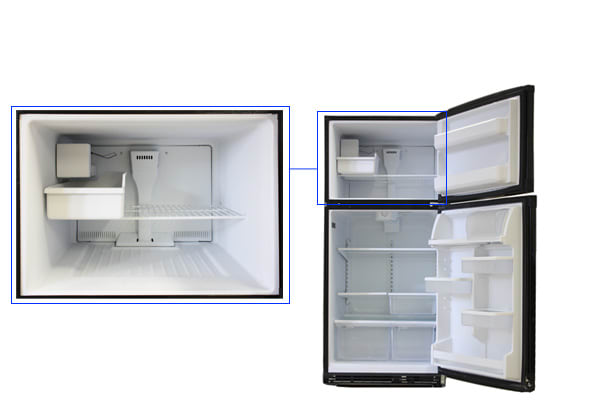
The {{product.name}}'s ice maker is found in the rear-left corner of the upper freezer drawer. The control switch is simple to manipulate, and the ice tray beneath it can be removed for additional storage space if desired.
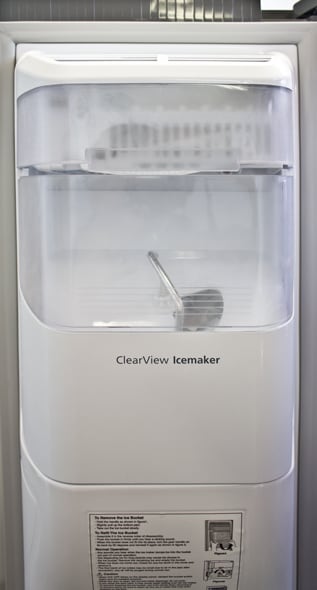
Back
{{section_header}}{{section.name}}{{/section_header}}
The back panel has a water line that connects to the ice maker.
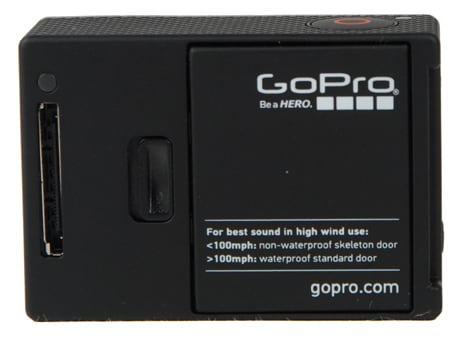
Sides
{{section_header}}{{section.name}}{{/section_header}}
The {{product.name}} has white sides, as well, but unlike the smooth front, they are finished with a matte texture.
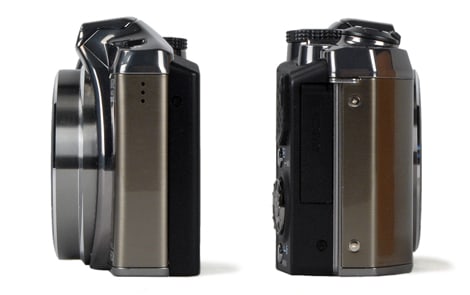
Olympus SZ-31MR iHS side views
Running Cost
{{section_header}}{{section.name}}{{/section_header}}
At a standard rate of 9.1 cents per kW-h, the {{product.name}} costs about $36.75 per year.
Power Use Per Cu Ft
{{section_header}}{{section.name}}{{/section_header}}
The {{product.name}} uses only about 0.09 kW-h per cubic foot of usable space, a very reasonable rate for a refrigerator of its size.
Fridge Temperature
{{section_header}}{{section.name}}{{/section_header}}
In order to collect our data, we place sensors into substance designed to allow us to measure what the internal temperature of food would be. These are placed at various levels inside the compartments, and left there for several days. The {{product.name}} exhibited incredibly consistent temperature readings from the top shelf to the bottom of the refrigerator portion based on the information acquired.
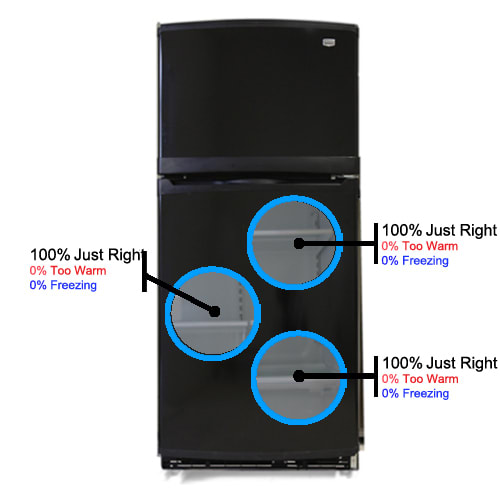
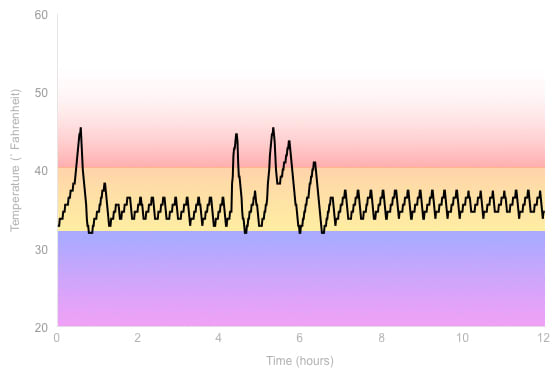
We kept the temperature control set to 4 based on the manufacturer's recommended setting. While the {{product.name}} remained consistent throughout, the overall temperature ran about three degrees higher than it should have for optimal performance. Just be sure to keep an eye on the internal temperature and lower it as needed; a small thermometer may be a good investment.
Freezer Temperature
{{section_header}}{{section.name}}{{/section_header}}
Bottom freezers are known for consistently reliable freezers, and the {{product.name}} is no exception. The smaller freezer unit means that the cold air circulates easily and keeps temperatures consistent. The temperature in this freezer, from top to bottom, fluctuated less than a full degree during the course of our testing process, which means you won't have to worry about your food getting any freezer burn.
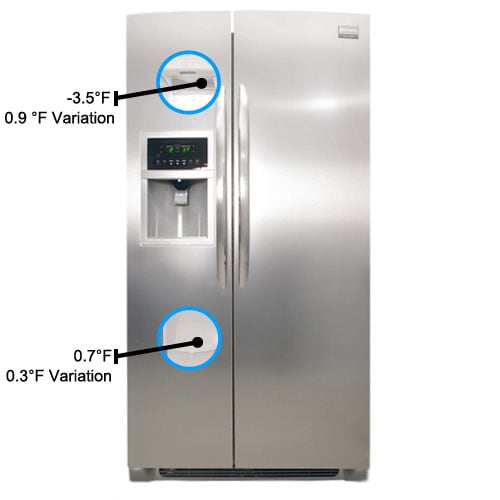
Vegetable Drawer
{{section_header}}{{section.name}}{{/section_header}}
The crisper drawers managed to lose only about 0.19 grams per hour of moisture, a very acceptable amount of water loss. This figure is about average, meaning you can store produce comfortably in the drawer as long as you don't leave it in there indefinitely.
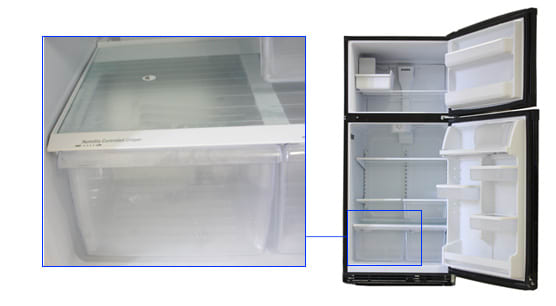
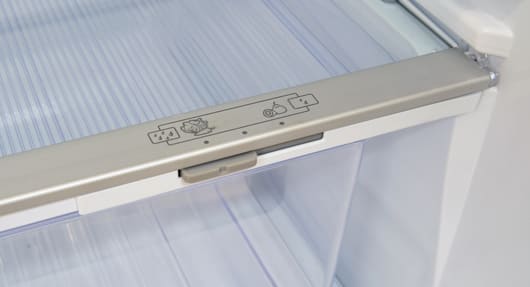
Power Loss
{{section_header}}{{section.name}}{{/section_header}}
After recording data for over 36 hours from the point at which the unit was unplugged, the internal temperature of the freezer was still well below freezing. The numbers show that the {{product.name}}'s freezer is well-insulated and will keep your goods safely frozen even if you have an extended power outage.
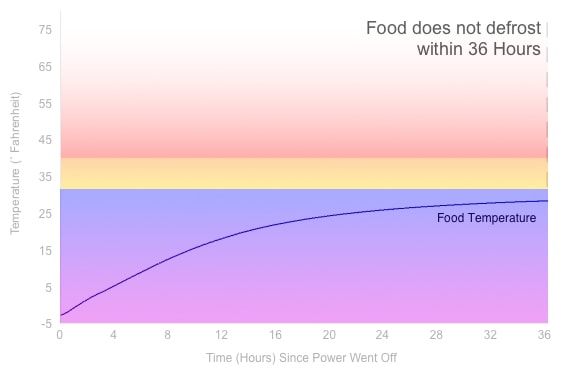
Freezing Performance
{{section_header}}{{section.name}}{{/section_header}}
When food is flash frozen, it guarantees the best quality when thawed. This means that the faster a freezer can get to instantaneous freezing, the better. We test this by measuring the data recorded by an internal temperature sensor to determine how quickly it freezes. The {{product.name}} only took 1 hour and 35 minutes to freeze its contents, which is quite good.

Usable Space
{{section_header}}{{section.name}}{{/section_header}}
The numbers published by manufacturers reflect estimated total space. Our measurements, however, only take into account the space available to store items, meaning we subtract space taken up shelves, drawers, and any other interior feature where food storage is blocked. The {{product.name}}, then, has 10.13 cu. ft. of storage space, including space found on top of all the shelves and the three drawers found in the main section.
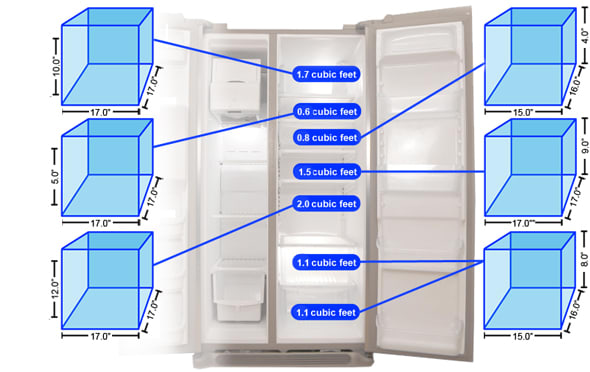
The fridge door also contributes to the overall storage capacity, distributed throughout three adjustable shelves, a fixed shelf on the bottom, and the dairy tray.
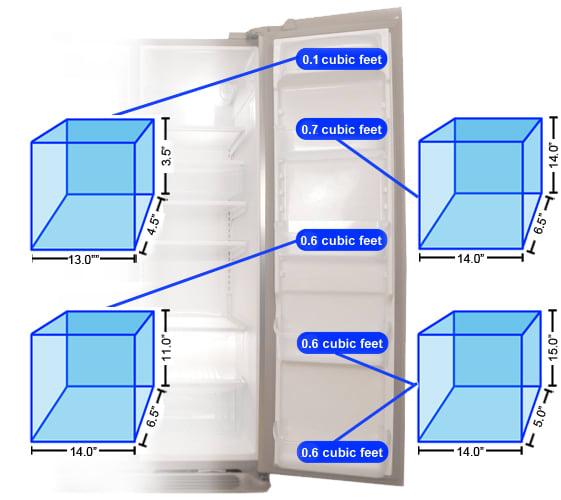
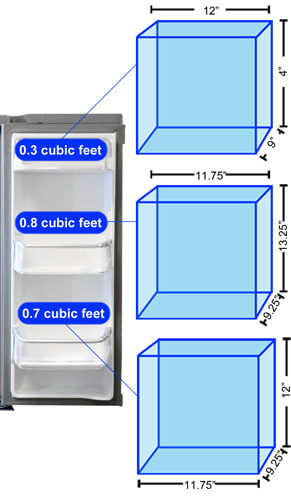
The freezer, on the other hand, isn't too large, clocking in at 2.85 cu. ft. Most of the space is found in the lower, deeper drawer. Much of the space that would be found on the upper shelf is taken up by the {{product.name}}'s ice maker.
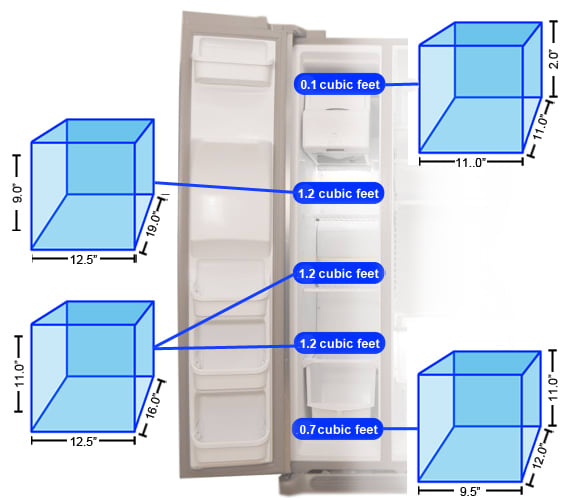
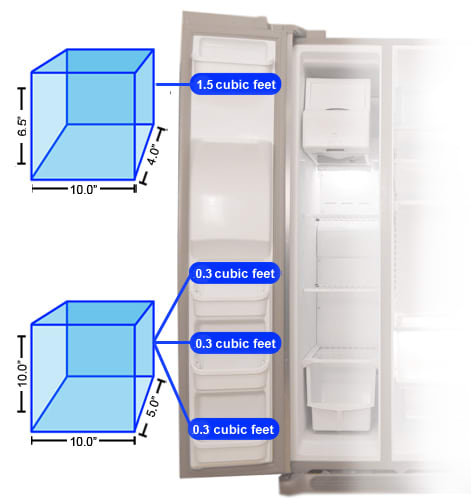
Below are the manufacturers own figures for capacity, and our own measurements for usable capacity. The manufacturers figures do not take account of the shelves, drawers and other removable features, but our measurements do account for the space these take up.
Ease of Access
{{section_header}}{{section.name}}{{/section_header}}
The refrigerator puts most food at easy-to-see eye level. As with all bottom freezers, though, storing a lot of food in the freezer drawer may mean a lot of bending over and rooting around. The shelves are sturdy with lots of slots in the back for customized storage options, but are heavy enough to make them difficult to move. The three drawers are all very easy to open even when storing heavier items compared to other plastic-on-plastic designs.
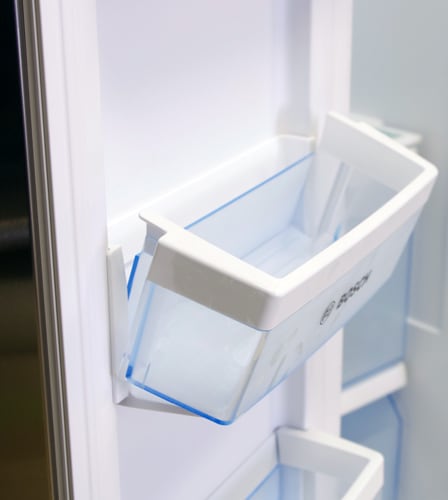
Controls
{{section_header}}{{section.name}}{{/section_header}}
The sections have temperature controls independent of each other, on a 0-7 scale located on a unit at the top center of the refrigerator. The console numbers glow, though the rest of the unit does not. The manufacturer's recommended settings are labeled, as well.
The fridge and freezer have their own, separate temperature controls based on a 7 point scale found at the front and top of the fridge. While easy to use and manipulate, you won't know the actual temperature inside the {{product.name}} without using a thermometer.

Ice Maker
{{section_header}}{{section.name}}{{/section_header}}
The {{product.name}}'s ice maker is found in the rear-left corner of the upper freezer drawer. The control switch is simple to manipulate, and the ice tray beneath it can be removed for additional storage space if desired.

Cleaning
Noise
Conclusion
Energy Efficiency
A low operating cost means that, even if you can't find this at a sale price, you'll save money in the long run compared to most other models.
Performance
The {{product.name}} was very consistent throughout for temperature readings in both the freezer and fridge compartments. Additionally, the crisper drawers retained an acceptably average amount of moisture over time.
Storage Space
A smaller freezer may make this a poor choice for undergrads and bachelors, but the main compartment has enough space to accommodate family-sized eating habits.
Usability
The pull-out freezer may keep away folks who don't like to stoop for their ice and frozen peas, but the non-frozen food is easy to access and placed at eye level. Extensive shelf customization makes the fridge storage fairly flexible.
Meet the tester
Matthew is a native of Brockton, MA and a graduate of Northeastern, where he earned a degree in English and Theatre. He has also studied at the Gaiety School of Acting in Dublin and spends most of his free time pursuing a performance career in the greater Boston area.
Checking our work.
Our team is here to help you buy the best stuff and love what you own. Our writers, editors, and experts obsess over the products we cover to make sure you're confident and satisfied. Have a different opinion about something we recommend? Email us and we'll compare notes.
Shoot us an email